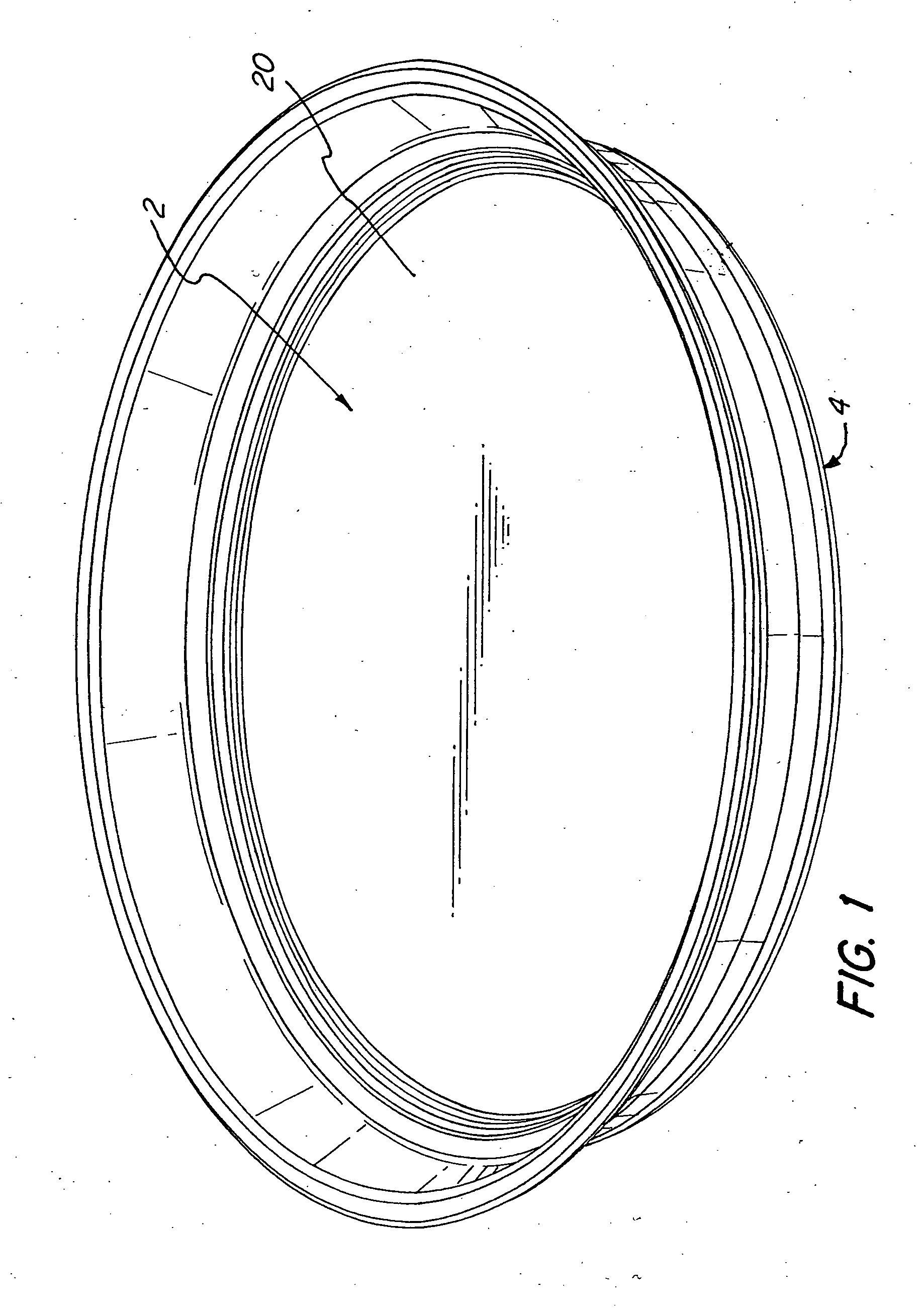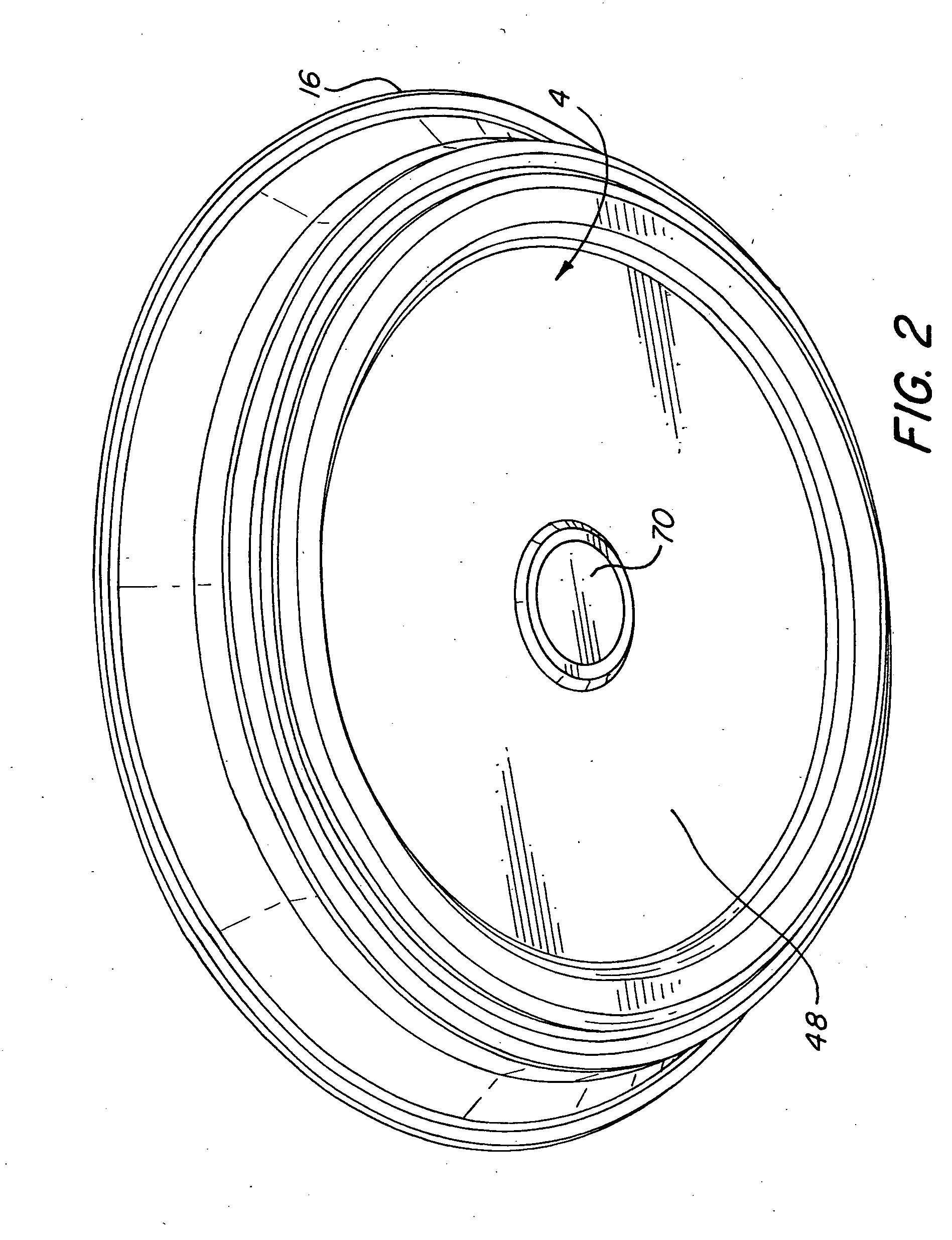Induction heated server and method of making
a technology of induction heating and servers, applied in the field of induction heating servers, can solve the problems of high internal pressure, 0 percent latent storage, and 100 percent sensible heat in the metal plate,
- Summary
- Abstract
- Description
- Claims
- Application Information
AI Technical Summary
Benefits of technology
Problems solved by technology
Method used
Image
Examples
Embodiment Construction
[0033]Turning first to FIGS. 1, 2, 6, and 10, therein illustrated is a server embodying the present invention comprised of a top element generally designated by the numeral 2, a bottom element generally designated by the numeral 4, an RFID tag 68 seated in a well 66, and a cap 70 sealing the tag 68 in the well.
[0034]The components which are internal to the assembled top and bottom elements 2, 4 comprise a perimeter ring (“P-ring”) 14, the disc or load 8, insulation 10, high temperature resin film 12, and a layer of vermiculite 22. These internal elements are assembled in a mold cavity with the previously molded top element 2, and molten resin is injected into the mold cavity to overmold the bottom element 4 and encapsulate the internal elements to bond to the top element 2 and P-ring 14.
[0035]The new induction heated server design and assembly process was developed to address the limitations of the current base technology. The new server encapsulates the load in an overmolding proce...
PUM
| Property | Measurement | Unit |
|---|---|---|
| temperatures | aaaaa | aaaaa |
| temperatures | aaaaa | aaaaa |
| temperatures | aaaaa | aaaaa |
Abstract
Description
Claims
Application Information
 Login to View More
Login to View More - R&D
- Intellectual Property
- Life Sciences
- Materials
- Tech Scout
- Unparalleled Data Quality
- Higher Quality Content
- 60% Fewer Hallucinations
Browse by: Latest US Patents, China's latest patents, Technical Efficacy Thesaurus, Application Domain, Technology Topic, Popular Technical Reports.
© 2025 PatSnap. All rights reserved.Legal|Privacy policy|Modern Slavery Act Transparency Statement|Sitemap|About US| Contact US: help@patsnap.com



